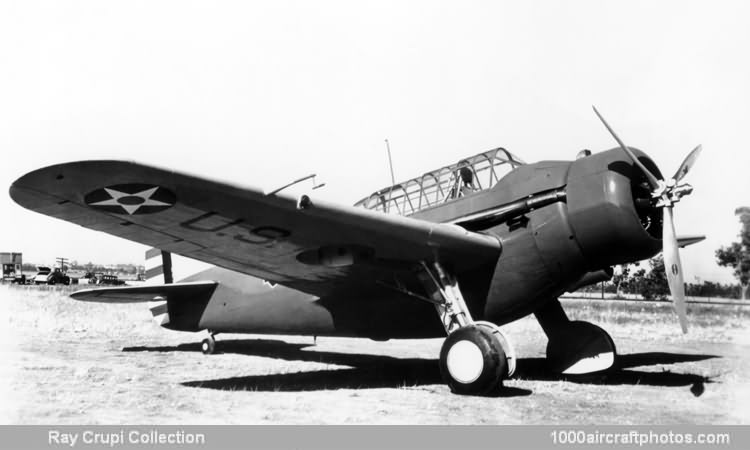06/30/2012. Remarks by Johan Visschedijk: "The General Aviation GA-15 was designed to provide the USAAC with a new generation of observation aircraft, improving radically on the performance and capability of the high-wing, open cockpit monoplanes that had been the norm for observation types since WW I. To match the standards being achieved by the new bombers and fighters, the Army specified that its new observation craft should be of all-metal construction, with a max speed over 200 mph (322 kmh), service ceiling over 20,000 ft (6,100 m), range of at least 700 mls (1,127 km), crew of three and defensive armament.
These features were provided in the GA-15 design, which had a mid-wing, an 850 hp Wright R-1820-41 Cyclone engine and crew of three in tandem beneath a long 'glasshouse' enclosure. For visual observation, an additional crew position was built into the deep fuselage beneath the wing, with front, side and ventral windows; this position was accessible from the center cockpit, while the third crewman in the rear of the cockpit manned the flexibly-mounted 0.30 in (7.62 mm) gun for rear defense. A similar gun in the wing was fixed to fire forwards and aimed by the pilot.
By the time the prototype GA-15 was completed, May 1935, the company had be renamed the Manufacturing Division of North American, and the aircraft was registered to North American as X2079. In late 1935 the aircraft was sold to the USAAC and the registration was cancelled on December 30, 1935. The USAAC designated it XO-47 and allotted the serial 36-145.
In the spring of 1936 the XO-47 was flown to Wright Field, Dayton, Ohio, for evaluation. Strength and flight performance tests met expectations, but design modifications were required in aspects of crew visibility, armament, and propulsion systems. Following these trials, the aircraft was flown to the newly-established North American Aviation plant in Inglewood, California, where a number of refinements were made, after which North American re-designated it as NA-15. In this form the XO-47 was accepted by the USAAC.
On August 15, 1936, North American received on order for 109 NA-25 O-47As (s/n 37-260 to 37-368, c/n 25-203 to 25-311) and these aircraft began to appear from the Inglewood plant later that year, followed by 55 more NA-25 O-47As (s/n 38-271 to 38-325, c/n 25-541 to 25-595) on a second contract dated October 20th, 1937.
The O-47As had 975 hp R-1820-49 engines and most were delivered in natural metal finish; 48 of the second batch were procured for the Air National Guard. Production was completed with 74 NA-51 O-47Bs (s/n 39-065 to 39-138, c/n 51-978 to 51-1051), with 1,060 hp R-1820-57s, an increase of 50 gal (189 l) in internal fuel capacity and higher gross weight. Most O-47As and O-47Bs had revised lower fuselage lines, with less transparencies for the observer.
The O-A7s were well distributed through the observation squadrons by 1941, but saw little operational service after America entered the WW II. A few were used from overseas bases after the Japanese attack on Pearl Harbor, and for a few months in early 1942, some submarine patrols were flown off the US coasts.
Thereafter, the O-47s were relegated to training, target-towing and other utilitarian duties. A few O-47Bs survived the war and were modified for commercial use on restricted category certificates, issued on August 1, 1945. In this role, they operated as single seaters with the center and rear seats removed and cargo tie-downs fitted instead."
